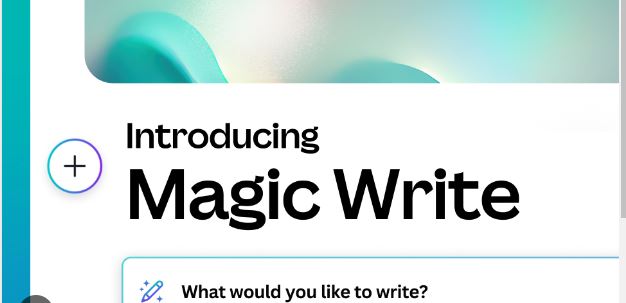What Are Some Emerging Trends in Marketing to Pay Attention To?
Introduction – Emerging Trends in Marketing
In the ever-evolving world of marketing, staying ahead of the curve is crucial to staying relevant and achieving success. With the rapid advancement of technology and changing consumer behaviors, new trends are constantly emerging, shaping the way businesses approach their marketing strategies. In this blog post, we will explore some of the most significant emerging trends in marketing that you should pay attention to in order to stay competitive and maximize your business’s growth potential.


1. Artificial Intelligence (AI) and Machine Learning
Artificial Intelligence (AI) and machine learning have brought significant advancements to the field of marketing, enabling marketers to analyze vast amounts of data, personalize customer experiences, and automate various processes. Let’s dive deeper into how AI and machine learning are revolutionizing marketing with some examples:
Data Analysis and Insights
AI-powered tools can process and analyze large datasets at incredible speed, providing marketers with valuable insights into customer behavior. These tools can identify patterns, trends, and correlations within the data that would be challenging for humans to detect. For instance, AI algorithms can analyze customer purchase history, website interactions, and demographic data to uncover hidden preferences, predict future behaviors, and segment customers into specific groups for targeted marketing campaigns.
Example
Netflix utilizes AI algorithms to analyze user viewing patterns, ratings, and browsing behavior. By leveraging this data, Netflix recommends personalized content to individual users, leading to higher engagement and customer satisfaction.
Personalized Campaigns – – Emerging Trends in Marketing
AI and machine learning enable marketers to deliver highly personalized campaigns tailored to individual customers. By analyzing customer data, such as browsing history, purchase behavior, and social media interactions, AI-powered tools can create detailed customer profiles and recommend products or services that align with their interests and preferences. This level of personalization enhances the customer experience, increases engagement, and improves conversion rates.
Example
Amazon uses machine learning algorithms to provide personalized product recommendations based on customer browsing and purchasing history. These recommendations appear on the Amazon website, email newsletters, and even personalized ads on other platforms, resulting in higher conversion rates and customer loyalty.
Chatbots and Virtual Assistants — Emerging Trends in Marketing
Chatbots and virtual assistants powered by AI are becoming increasingly popular in customer support and engagement. These intelligent bots can simulate human-like conversations, providing instant responses to customer queries, offering recommendations, and guiding users through various processes. Chatbots can handle a wide range of inquiries, freeing up human resources and providing round-the-clock support to customers.
Example
Many businesses, including banks, e-commerce platforms, and airlines, use chatbots to provide quick and efficient customer support. For instance, Bank of America’s chatbot, Erica, assists customers with account inquiries, transaction details, and even financial advice.
Automation of Marketing Processes – – Emerging Trends in Marketing
AI and machine learning can automate repetitive marketing tasks, saving time and resources for marketers. Automated processes include email marketing, social media scheduling, content creation, and ad optimization. By leveraging AI algorithms, marketers can streamline their workflows, improve efficiency, and focus on more strategic aspects of their campaigns.
Example
HubSpot’s Marketing Hub offers AI-powered automation features that allow marketers to schedule and send personalized emails, segment audiences, and analyze campaign performance. This automation saves time and ensures that the right message reaches the right audience at the right time.
In conclusion, AI and machine learning have transformed the marketing landscape by providing powerful data analysis capabilities, enabling personalized campaigns, facilitating instant customer support through chatbots, and automating various marketing processes. By embracing AI-powered tools and technologies, marketers can enhance their efficiency, deliver more targeted campaigns, and ultimately improve customer experiences, leading to increased engagement and business growth.


2. Voice Search Optimization
The rise of voice-enabled devices and voice assistants, such as Amazon Echo with Alexa, Google Home with Google Assistant, and Apple HomePod with Siri, has revolutionized the way people search for information. This shift in search behavior presents a new challenge and opportunity for marketers to optimize their content for voice search. Let’s explore how voice search optimization is crucial for marketers and how it differs from traditional search optimization:
Conversational Language and Natural Queries
Voice searches are typically more conversational and natural compared to text-based searches. People tend to ask complete questions or speak full sentences when using voice assistants. Marketers need to understand and incorporate these conversational language patterns into their content to match the queries users make.
Example
Text-based search: “best Italian restaurants NYC” Voice-based search: “What are some of the best Italian restaurants in New York City?”
Long-Tail Keywords and Question Phrases
Optimizing for voice search involves focusing on long-tail keywords and question phrases. Long-tail keywords are more specific and detailed search terms that better align with voice search queries. Question phrases, such as “how to,” “what is,” or “where can I,” are commonly used in voice searches. Marketers need to identify relevant long-tail keywords and incorporate them naturally into their content.
Example
Text-based keyword: “running shoes” Voice-based long-tail keyword: “best affordable running shoes for women”
Featured Snippets and Direct Answers — Emerging Trends in Marketing
Voice assistants often provide direct answers to user queries using featured snippets or concise responses from authoritative sources. Marketers can optimize their content to increase the chances of being featured as a direct answer. Structuring content in a way that directly addresses commonly asked questions can improve visibility and brand exposure.
Example
User query: “How long does it take to bake a cake?” Featured snippet response: “On average, it takes about 30 to 40 minutes to bake a cake at 350°F.”
Local Search Optimization — Emerging Trends in Marketing
Voice searches often have a strong local intent, as users frequently ask for nearby businesses or services. Marketers should ensure their local SEO strategies are well-implemented, including accurate business listings, localized content, and relevant location-based keywords.
Example
User query: “What are some good coffee shops near me?” Optimized response: “Here are some popular coffee shops in your area: [list of coffee shops].”
Mobile Optimization — Emerging Trends in Marketing
Voice searches are primarily conducted on mobile devices. Marketers need to ensure their websites are mobile-friendly, load quickly, and provide a seamless user experience. Mobile optimization is essential for capturing voice search traffic effectively.
Example
A mobile-friendly website that loads quickly, has clear navigation, and displays information in a user-friendly format.
By incorporating voice search strategies into their SEO and content marketing efforts, marketers can effectively capture the growing voice search market and ensure their brands remain visible and accessible to voice search users. Understanding the unique aspects of voice search, such as conversational language, long-tail keywords, featured snippets, local optimization, and mobile-friendliness, will help marketers stay ahead of the competition and connect with their target audience in this evolving landscape.
3. Influencer Marketing
In today’s marketing landscape, influencer marketing has become a powerful strategy for businesses to connect with their target audience authentically. Consumers are placing more trust in recommendations from individuals they perceive as trustworthy and relatable rather than traditional advertising. Here’s an in-depth look at the concept of influencer marketing and its emerging trends:
Authentic Recommendations
Influencer marketing capitalizes on the power of authenticity. Influencers are individuals who have built a loyal following by sharing their experiences, expertise, and opinions in specific niches. Consumers trust these influencers because they perceive them as genuine and transparent. When influencers recommend a product or service, their followers are more likely to consider it as a reliable endorsement.
Example
A beauty influencer creating video tutorials and sharing honest product reviews on YouTube can significantly impact the purchasing decisions of her followers when she recommends a particular skincare brand.
Partnerships with Influencers
Businesses are collaborating with influencers on social media platforms to promote their products or services. This partnership enables brands to tap into the influencers’ engaged audience and leverage their credibility to gain exposure and increase brand awareness. By working with influencers, businesses can effectively reach their target demographics, as influencers have already built communities around specific interests.
Example
A fashion brand collaborates with a fashion blogger to showcase its latest collection on Instagram. The influencer shares high-quality images featuring the brand’s products and provides an authentic review and personal styling tips to engage her followers.
Rise of Micro-Influencers — Emerging Trends in Marketing
Micro-influencers, with smaller but highly engaged followings, have emerged as an effective option for influencer marketing campaigns. These influencers typically have a more niche focus, allowing brands to reach a highly targeted audience. Micro-influencers often have a more personal connection with their followers, leading to higher levels of trust and engagement.
Example
A local fitness studio partners with a micro-influencer who specializes in healthy living and shares workout routines and meal ideas on her blog and social media channels. The fitness studio sponsors a few classes for the micro-influencer’s followers, who are interested in fitness and healthy lifestyle content.
Values Alignment and Long-Term Relationships
To leverage influencer marketing successfully, it is crucial for businesses to collaborate with influencers whose values align with their brand identity and target audience. Choosing influencers whose interests and values match those of the brand ensures authenticity and credibility in the partnership. Building long-term relationships with influencers allows for consistent brand exposure and creates a deeper connection with the influencer’s audience.
Example
A sustainable fashion brand partners with influencers who advocate for ethical fashion and environmental sustainability. By consistently working with these influencers over an extended period, the brand reinforces its commitment to sustainable practices and builds a community of environmentally conscious consumers.
In conclusion, influencer marketing has gained momentum as consumers seek authenticity and trust in their purchasing decisions. By partnering with influencers who align with their brand values, businesses can tap into their engaged audience and amplify their brand message. Whether collaborating with macro-influencers or micro-influencers, building long-term relationships and focusing on authenticity is key to successful influencer marketing campaigns.


4. User-Generated Content (UGC)
User-generated content (UGC) has transformed the marketing landscape by providing an authentic and influential way for brands to engage with their audience. Let’s explore how UGC works as a powerful marketing tool and the benefits it offers to businesses:
Authenticity and Trust
UGC is highly valued by consumers because it comes directly from their peers or fellow customers. It provides an authentic perspective on a brand, product, or service, making it more trustworthy and credible than traditional marketing messages. When consumers see real people sharing their experiences and opinions, it fosters trust and helps to build a genuine connection between the brand and its audience.
Example
A clothing brand encourages its customers to share their outfit photos on social media using a specific hashtag. These UGC posts showcase how real people style and enjoy the brand’s clothing, creating a sense of authenticity and trust among potential customers.
Increased Engagement
By encouraging customers to create and share content, brands can drive higher engagement levels. UGC inspires customers to actively participate and interact with the brand, resulting in increased brand awareness and exposure. It also encourages conversations and discussions around the brand, creating a vibrant and engaged community.
Example
A beauty brand runs a UGC contest, asking customers to share their makeup looks using the brand’s products. Participants enthusiastically share their photos, comment on each other’s posts, and engage with the brand’s social media accounts, leading to a surge in engagement and brand visibility.
Community Building
UGC fosters a sense of community among customers who share a common interest in a brand or product. When customers see others sharing their experiences, they feel a part of a larger community, creating a sense of belonging. By actively encouraging UGC and featuring it on various platforms, brands can nurture and strengthen this community, leading to brand loyalty and advocacy.
Example
A fitness equipment brand creates a dedicated hashtag for customers to share their workout routines and progress. The brand regularly highlights customer posts on its website and social media channels, fostering a supportive community of fitness enthusiasts who inspire and motivate each other.
Credibility and Social Proof — Emerging Trends in Marketing
Sharing UGC on websites, social media channels, and marketing materials enhances the credibility of a brand. When potential customers see positive reviews, testimonials, or social media posts from real people, it provides social proof and influences their purchasing decisions. UGC acts as a powerful endorsement that helps build confidence and reduces skepticism.
Example
An online travel agency displays customer reviews and testimonials prominently on their website. These testimonials highlight the positive experiences customers had while booking and traveling, influencing potential customers to trust the agency and choose their services.
In conclusion, UGC is a valuable marketing tool that leverages the authenticity, trust, and engagement of consumers. By encouraging customers to create and share content, brands can build a vibrant community, foster trust, and influence purchasing decisions. Sharing UGC across various marketing channels enhances credibility and establishes social proof. Embracing UGC as part of a brand’s marketing strategy can lead to increased brand loyalty, customer engagement, and business growth.


5. Personalization and Hyper-targeting
In today’s competitive marketing landscape, personalization has become a crucial aspect of successful marketing strategies. Consumers now expect brands to deliver personalized experiences that cater to their unique preferences and needs. Let’s explore how advances in data analytics and customer segmentation have empowered marketers to provide highly targeted and personalized content, leading to increased engagement, conversion rates, and brand loyalty:
Utilizing Consumer Data
Marketers now have access to vast amounts of consumer data, including demographic information, browsing behavior, purchase history, and preferences. By leveraging this data, marketers can gain valuable insights into individual customers and understand their preferences, interests, and needs. This data serves as the foundation for creating personalized experiences.
Example
An e-commerce retailer analyzes customer purchase history and browsing behavior to identify patterns and preferences. Using this data, they can recommend personalized product suggestions to each customer, ensuring a tailored shopping experience.
Customized Product Recommendations
Personalization enables marketers to deliver targeted product recommendations based on individual customer preferences. By utilizing algorithms and machine learning, marketers can analyze historical data and predict customer preferences and behavior. Customized product recommendations not only enhance the customer experience but also increase the likelihood of conversion and repeat purchases.
Example
An online streaming service uses personalized algorithms to recommend TV shows and movies to individual subscribers based on their viewing history and ratings. This personalized approach keeps users engaged, leading to increased retention and satisfaction.
Personalized Emails — Emerging Trends in Marketing
Email marketing remains a powerful tool for engaging with customers. Personalized emails tailored to individual preferences and behaviors can significantly improve open rates, click-through rates, and overall campaign performance. By segmenting their email lists and utilizing dynamic content, marketers can deliver highly relevant and targeted messages to each recipient.
Example
An online retailer sends personalized emails to customers based on their past purchases and browsing behavior. These emails include product recommendations, exclusive offers, and relevant content, creating a personalized shopping experience that drives engagement and conversions.
Dynamic Website Content — Emerging Trends in Marketing
Personalization extends to a brand’s website, where marketers can dynamically customize content based on individual preferences and behavior. By utilizing website tracking, cookies, and user profiles, marketers can deliver personalized landing pages, recommendations, and offers that align with each visitor’s interests and needs.
Example
An online travel agency displays personalized travel deals and destination recommendations on their homepage based on a visitor’s previous search history or geographical location. This dynamic content engages visitors and increases the likelihood of booking.
Strengthening Brand Loyalty
Personalization plays a crucial role in building strong brand loyalty. When customers feel understood, catered to, and valued as individuals, they are more likely to develop a deep connection with the brand. By consistently delivering personalized experiences across various touchpoints, marketers can foster long-term relationships, increase customer retention, and drive advocacy.
Example
A beauty brand offers a loyalty program where customers receive personalized offers, birthday gifts, and exclusive content based on their preferences and purchase history. This personalized approach strengthens the emotional bond between the customer and the brand, fostering loyalty and repeat purchases.
In conclusion, personalized experiences have become an essential expectation for today’s consumers. By utilizing consumer data, marketers can create highly targeted and personalized content, including customized product recommendations, personalized emails, and dynamic website content. This hyper-targeting not only increases engagement and conversion rates but also strengthens brand loyalty by making customers feel valued and understood as individuals. Embracing personalization as a core marketing strategy can drive customer satisfaction, long-term relationships, and business growth.


Conclusion – Emerging Trends in Marketing
In today’s ever-evolving marketing landscape, staying on top of emerging trends is essential for businesses to thrive. The rapid advancements in technology and shifting consumer preferences have given rise to several key trends that are shaping the future of marketing. From Artificial Intelligence and voice search optimization to influencer marketing, user-generated content, and personalization, these trends offer immense potential for businesses to connect with their target audience in more meaningful ways.
Artificial Intelligence and machine learning have revolutionized how marketers analyze data, personalize experiences, and automate processes. By harnessing the power of AI, businesses can gain valuable insights into customer behavior, deliver highly targeted campaigns, and streamline their marketing efforts for greater efficiency and effectiveness.
The rise of voice-enabled devices and voice assistants has transformed search behavior, necessitating the need for voice search optimization. Adapting SEO and content strategies to accommodate conversational language and long-tail keywords is crucial to ensure brands remain visible and accessible to voice search users. By embracing voice search optimization, businesses can capture the growing market of voice search users and stay ahead of the competition.
Influencer marketing continues to gain momentum as consumers increasingly seek authentic recommendations from trusted individuals. Collaborating with influencers who align with their brand values allows businesses to tap into engaged audiences and build credibility. The emergence of micro-influencers further enhances the effectiveness of influencer marketing, as they offer highly targeted and engaged followings. By leveraging the power of influencer marketing, businesses can increase brand awareness, drive customer engagement, and foster long-term relationships with their audience.
User-generated content has become a powerful tool for fostering authenticity, building trust, and increasing engagement. By encouraging customers to share their experiences through reviews, testimonials, and social media posts, businesses can create a strong community around their brand. Sharing user-generated content across various marketing channels boosts credibility and influences purchasing decisions, as consumers rely on the opinions and experiences of their peers.
Personalization has become an expectation for consumers, who now seek tailored experiences that cater to their individual preferences and needs. By utilizing consumer data, marketers can create customized product recommendations, deliver personalized emails, and provide dynamic website content. This hyper-targeting approach not only increases engagement and conversion rates but also strengthens brand loyalty by making customers feel valued and understood.
To stay ahead of the game, businesses must remain vigilant, continuously monitor emerging trends, and experiment with new approaches. Embracing the power of these emerging marketing trends allows businesses to connect with their target audience more effectively, build stronger relationships, and ultimately drive growth in an increasingly competitive market.
In conclusion, the marketing landscape is constantly evolving, and businesses that adapt to emerging trends are poised to thrive. By staying informed, experimenting with new strategies, and embracing the power of Artificial Intelligence, voice search optimization, influencer marketing, user-generated content, and personalization, businesses can effectively navigate the changing marketing landscape, create meaningful connections with their audience, and achieve sustainable growth in the dynamic world of marketing.
7 Creative Ways to Improve Customer Loyalty and Retention
Adobe Firefly Beta – Introducing the all New AI



